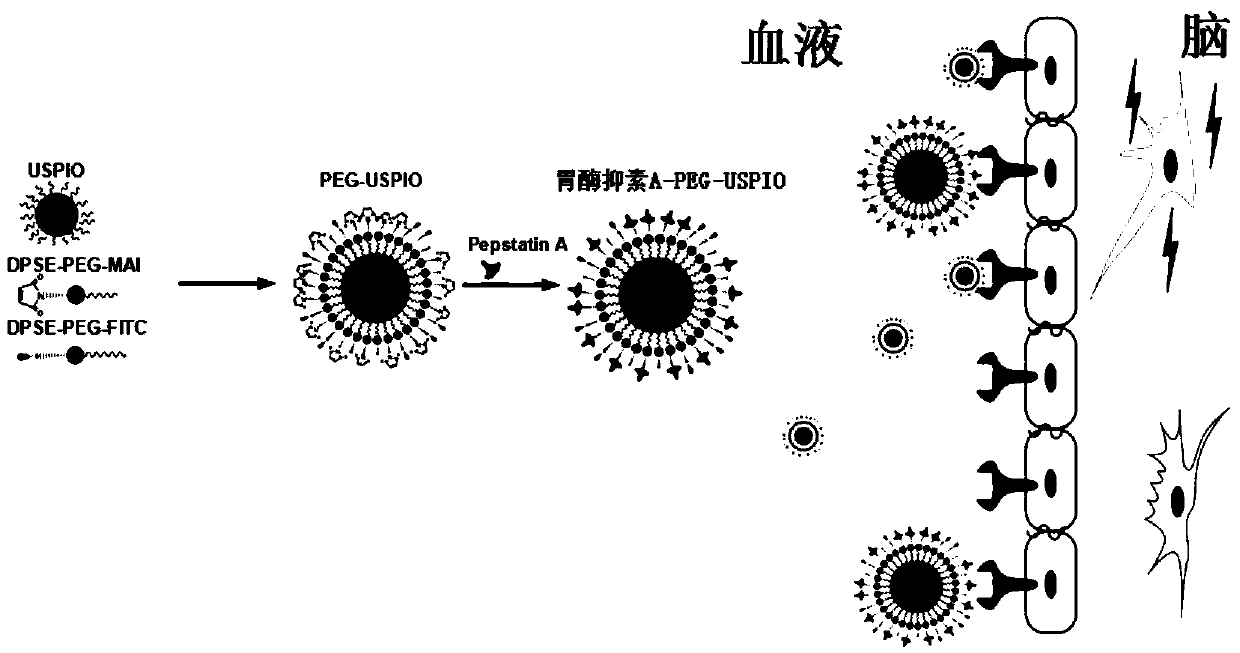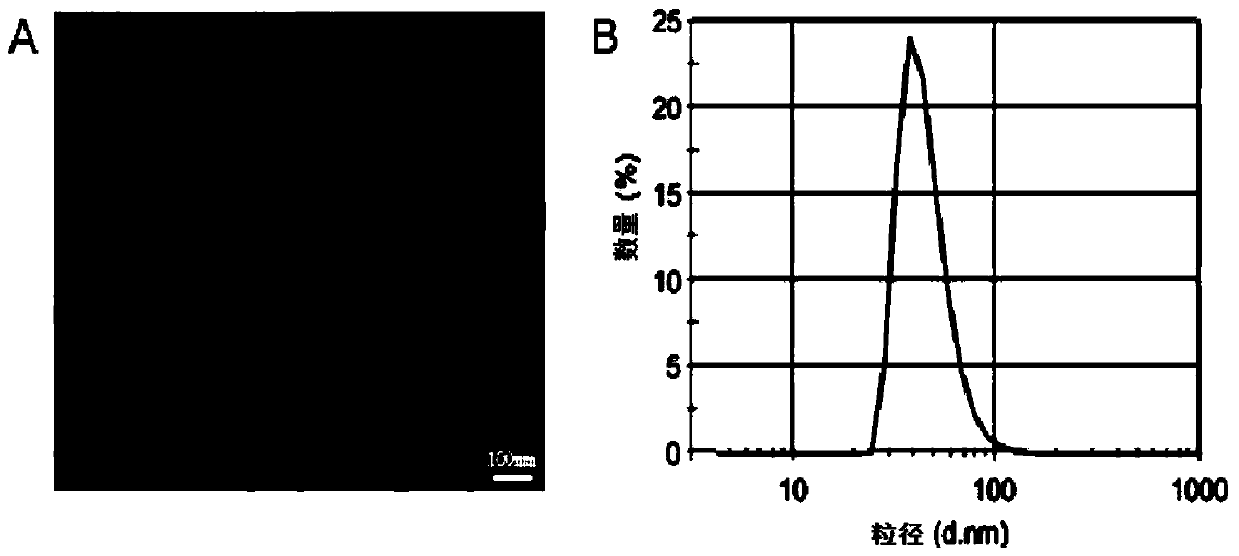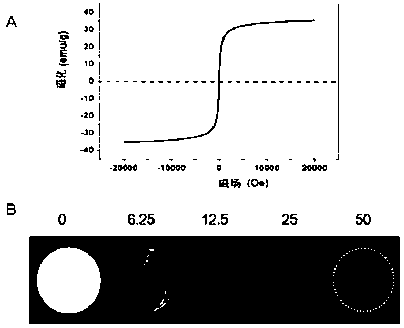Targeted nano-magnetic resonance contrast agent for brain epileptic foci, preparation and application thereof
A magnetic resonance contrast agent and epilepsy technology, applied in the field of molecular imaging, to achieve the effects of evaluating curative effect, evaluating prognosis, improving accuracy and safety
- Summary
- Abstract
- Description
- Claims
- Application Information
AI Technical Summary
Problems solved by technology
Method used
Image
Examples
Embodiment 1
[0048] This embodiment provides a targeted nano-magnetic resonance contrast agent for brain epileptic foci and preparation thereof, which are specifically as follows:
[0049] Preparation of PEG-USPIO nanoparticles: accurately weigh 10mg lipid USPIO, 50mg DSPE-PEG-MAL, 5mg DSPE-PEG-FITC, dissolve in 2ml dichloromethane, sonicate for 10min in ice-water bath, and rotary steam at 37℃ for 15min to remove dichloride After centrifugation with methane at 2500 rpm for 10 min at 4°C, the supernatant was discarded, and 0.5 mL of deionized water was dispersed and precipitated to obtain nanoparticles.
[0050] Preparation of pepstatin A-PEG-USPIO nanoparticles: add 2ml (5mg / mLUSPIO) of prepared deionized water-dispersed nanoparticles to the sulfhydryl activating reagent pepstatin A2mg / ml0.5ml, then stir at low speed for 4h. After centrifugation at 2500 rpm 4°C for 10 min, the supernatant was discarded, and 0.5 mL 0.01 MPBS (pH 7.4) was dispersed and precipitated to obtain the nanoparticles wit...
Embodiment 2
[0053] Divide BCEC cells (rat brain capillary endothelial cells) into 5×10 5 The concentration of cells in each well is inoculated in a six-well plate for experiment; wells 1~3 are blank control group; wells 4~6 are experimental group, add 100uM (1.5g / 100ml) glutamic acid to each well and incubate at 37℃ for 30min After that, PBS (phosphate buffered saline) was washed twice, and complete culture medium was added for routine culture; after 24 hours, each group was added with PBS, PEG-USPIO, and pepstatin A-PEG-USPIO (USPIO concentration 50μg / ml). After 30 minutes, samples were taken for immunofluorescence confocal qualitative analysis and flow cytometry FITC fluorescence quantitative analysis. The results are as follows Figure 4 , Figure 5 Shown: Figure 4 Shown that glutamate can induce high P-glycoprotein in BCEC cells, Figure 5 The shown targeting functional molecule pepstatin A can occupy the binding site of P-glycoprotein, which helps nanoparticle transport and visualizati...
Embodiment 3
[0055] Stereotactically locate the left hippocampal CA3 area of SD rats, microneedle injection of 3μL kainic acid (KA, 0.5mg / mL) to establish an animal model of epilepsy; injection of 3μL PBS (phosphate buffered saline) as a sham operation control group; 4% poly Perfused with formaldehyde, the brain was taken, and the expression of P-glycoprotein in the hippocampus of the epilepsy group and sham operation group was observed by immunofluorescence confocal imaging and WesternBlot analysis. The results are as follows Image 6 Shown: Image 6 It showed that the expression of P-glycoprotein in the hippocampus of the epilepsy group was significantly higher than that of the sham operation group, suggesting that epileptic seizures are closely related to the increased expression of P-glycoprotein.
PUM
| Property | Measurement | Unit |
|---|---|---|
| diameter | aaaaa | aaaaa |
| particle diameter | aaaaa | aaaaa |
| particle diameter | aaaaa | aaaaa |
Abstract
Description
Claims
Application Information
 Login to View More
Login to View More - R&D
- Intellectual Property
- Life Sciences
- Materials
- Tech Scout
- Unparalleled Data Quality
- Higher Quality Content
- 60% Fewer Hallucinations
Browse by: Latest US Patents, China's latest patents, Technical Efficacy Thesaurus, Application Domain, Technology Topic, Popular Technical Reports.
© 2025 PatSnap. All rights reserved.Legal|Privacy policy|Modern Slavery Act Transparency Statement|Sitemap|About US| Contact US: help@patsnap.com



